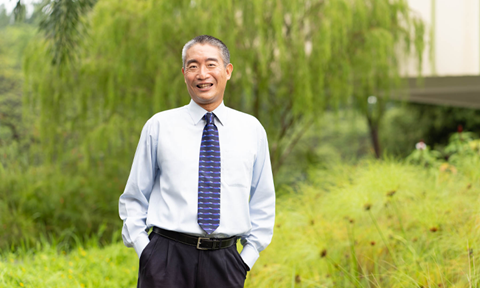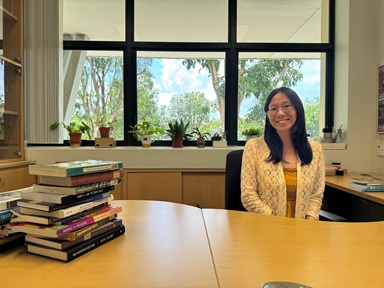ACS Primary going co-ed: Single-sex schools becoming a relic of the past?
SINGAPORE - When the news broke earlier in February that Anglo-Chinese School (ACS) Primary was relocating to the new Tengah town in 2030, many eyebrows were raised, to say the least.
Not only was the school making a big move from its Newton home ground, it was also, for the first time, going to accept girls in that year.
While most people described the move as an inclusive one, others had reservations about the school taking in girls, with concerns that this would alter its culture and identity.
This was among the feedback given by parents and ACS alumni at a town hall held by the school management on Wednesday.
But ACS Primary is hardly the first school to break tradition and become co-educational.
It joins a list of schools not just in Singapore, but also abroad, that have done so in the past few decades.
These include the last all-male Oxford University college St Benet’s Hall, which took in women in 2016; and liberal arts colleges in the United States such as Vassar College and Sarah Lawrence College, which ended their all-women status in the late 1960s.
In Singapore, Geylang Methodist and Fairfield Methodist, which were originally all-girls schools, became co-ed in the 1980s.
Nan Hua High School and Nan Chiau High School used to take in only girls until the 1980s. Similarly, then Hai Sing Girls’ High School changed its policy in 1990 to admit boys.
De La Salle School, which began as an all-boys school in 1952, admitted its first cohort of girls in 1996. More recently, in 2019, Canossa Convent Primary School took in boys and was renamed Canossa Catholic Primary School.
Associate Professor Jason Tan from the National Institute of Education (NIE) said there has been a shift towards more co-ed schools in Singapore since the 1960s.
“We haven’t had a new single-sex school since then, and we’ve seen formerly single-sex schools go co-ed in the 1980s and 1990s.
“Quite a few single-sex schools have also been merged into co-ed schools or closed down completely,” he said. “At the pre-university level, there used to be single-sex institutions but they, too, faded away by the 1980s.”
One key reason for this shift is that there are simply fewer students, and as a result of smaller birth cohorts, schools need to consolidate resources. Singapore had more than 61,000 live births in 1960. By 1970, this dropped to 45,934, and in recent years, it has hovered around 38,000 to 39,000.
As schools moved to new locations and bigger premises, they also had to open their doors to students from both genders to meet the needs of the population in newer housing estates.
Another often-cited reason for moving towards co-ed schooling, especially overseas, is gender equality and a wider shift in values in education.
Segregated school systems for girls and boys are less relevant in today’s context, where life and job outcomes for both genders are not as starkly different as in the past, say proponents of mixed schools.
A historical legacy
So why do single-sex schools still exist today?
Many of such schools hark back to a different era, when education was closely tied to traditional and religious beliefs that both genders needed to be prepared for the different roles they would play in adulthood.
Part of it also had to do with prevailing assumptions that girls and boys learn and behave differently, and are best taught separately.
Said Prof Tan: “Around the world, even now in many Muslim-majority countries, schooling is largely gender-segregated.
“Many single-sex schools have their origins in various Christian religious orders like the Methodists and Catholics, and we see this across the British Commonwealth countries, like Singapore, Australia and Malaysia.”
He added: “The belief was that gender roles were different, so girls needed access to education which was tailored to preparing them for roles as wives and mothers, although this has been changing in the early 20th century.”
Some schools started by missionaries, like the Convent of the Holy Infant Jesus and St Margaret’s – the latter is Singapore’s oldest school for girls – were set up to provide education for disadvantaged girls especially.
A number of schools opened by Chinese businessmen and philanthropists also aimed to increase access to educational opportunities for girls.
One example is the Singapore Chinese Girls’ School, which opened in 1899 to provide education for Straits Chinese, or Peranakan Chinese, girls at the time.
The idea was considered radical at a time when the local Chinese community held the conservative view that women did not need to be literate.
Nan Hua High School and Nan Chiau High School, which are both co-ed today, also have their roots as schools that catered to girls.
Do girls do better in single-sex schools?
Much of the ongoing debate about single-sex and co-ed schools is about which system of learning is superior.
In truth, it is hard to say.
Results from studies comparing both school types have been mixed, and it is difficult to ascertain because of other variables that influence educational attainment, such as parental involvement and home culture.
Some research shows that girls and boys learn differently.
For instance, girls tend to work better in groups, and single-sex schooling is more advantageous for girls in terms of test scores and discipline issues. But the caveat is that other factors like family background, rather than the school’s gender mix, could be at play.
Some educators think boys have a tendency to be more disruptive and girls are more disadvantaged in class because of the teacher’s attention being diverted to boys. Several studies suggest girls are a good influence on boys.
Dr Kelvin Seah, a senior lecturer at the National University of Singapore’s Department of Economics who has written on this topic, said there is evidence that boys tend to exhibit more behavioural problems than girls.
“Their ability to pay attention and self-regulate is lower on average than girls,” he said. “Hence, we may well see fewer class disruptions with the switch to a co-ed environment.”
Advocates of single-sex schooling believe that girls gain more confidence growing up and learning in such an environment, where they are free from limitations and subtle gender stereotypes.
Said Dr Seah: “One of the main benefits is that it empowers females to pursue courses and interests in areas which are stereotypically associated with males, such as science, technology, engineering and mathematics subjects or co-curricular activities like robotics or soccer.
“In a co-ed school, girls may feel more pressured to shy away from subjects or activities which are stereotypically associated with males to avoid social rejection, even though they may be incredibly talented in these areas.”
This view is echoed by women who attended all-girls schools when they were younger.
One 34-year-old said her 10-year experience in girls’ schools was empowering.
Accessing leadership opportunities was more about ability than gender, and she formed friendships that “blossomed” over the years while developing a deeper understanding of what it meant to be female, which was inculcated by the school more intangibly rather than explicitly.
Another 32-year-old girls’ school alumna said: “I feel that going to a girls’ school made me believe girls can do anything. It’s only when I went into the ‘real world’ that I realised there are a lot of gendered expectations.”
Still, the push for gender equality in the school system has gained momentum globally, with proponents saying there are benefits to educating girls and boys together.
In Ireland, which has the second-highest proportion of single-sex schools in Europe, the Labour Party put forward a Bill in 2022 that would see all single-sex primary schools turn co-ed within 10 years.
“I don’t know how we can properly espouse the idea of gender equality in the school system, while we are separating young people on the basis of gender, and contriving a scenario where they don’t learn side by side,” said the party’s spokesman for education Aodhan O Riordain, who was also a teacher at an all-girls school.
“It’s not going to help. It isn’t reflective of the society outside the school gate.”
Said NIE’s Prof Tan: “Some observers think co-ed schooling is the way to go, as schools ought to be preparing both genders for their adult lives where they most likely have to work together.”
In Singapore, the gender issue may have become entangled with the discussion about equity and inclusivity because of the prestigious nature of some single-sex schools, he added.
“When their founders set them up, their mission was to provide education to girls and boys from less-privileged backgrounds. But over the decades, they have gone on to become ‘elite’ schools,” he said.
Are mixed schools the way forward?
Based on the latest numbers, about 13 per cent and 18 per cent of primary and secondary schools here are single-sex, putting them squarely in the minority.
Some may wonder if, going forward, this means resources will be consolidated in mixed schools to serve a wider pool of students.
Others may ask, why should gender become the most hotly debated feature of a school? Other traits such as strong leadership, competent teachers, school culture and curriculum are also important considerations.
At the same time, some parents may wish to retain a degree of choice with respect to the types of schools for their children’s formative years.
In the end, it is up to all schools to provide an environment where students can form healthy attitudes about themselves and others around them, learn effectively, and find their place in the broader world.
Source: The Straits Times © SPH Media Limited. Permission required for reproduction.


.tmb-listing.jpg?Culture=en&sfvrsn=b13552ed_1)




